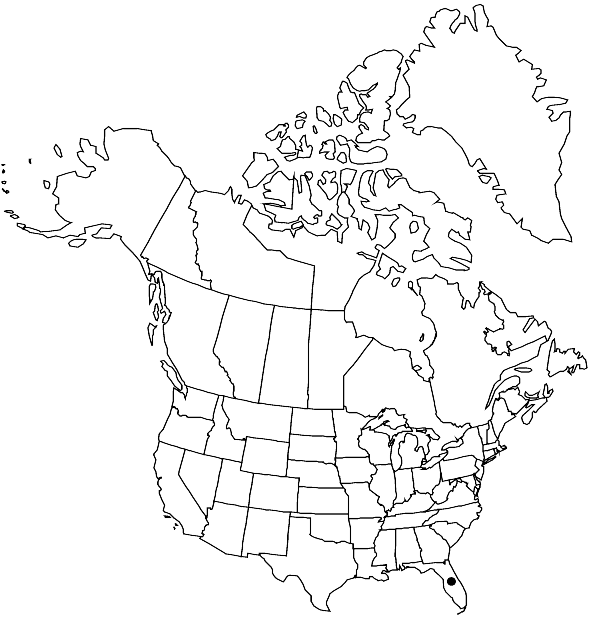Plaubelia sprengelii
Bull. Buffalo Soc. Nat. Sci. 32: 176. 1993,.
Plants loosely cespitose. Stems 1–4(–6) mm, not radiculose. Cauline leaves, spatulate, 1.3–1.5(–2) mm, margins entire, apex broadly acute to rounded-obtuse; costal adaxial stereid band variously developed or absent, basal cells not differentiated or occasionally as a small median group of short oblong-rectangular cells to 15 µm wide, 2–3:1, hyaline to yellow across the insertion, distal cells, 7–9 µm wide, 1:1. Specialized asexual reproduction absent. Seta 2–4.5 mm, yellow to red-brown. Capsule erect and symmetric, 0.8–1.7 mm, red brown, annulus of strongly vesiculose cells, revoluble; operculum 0.6–0.9 mm; peristome well developed, irregularly 2-fid or perforate, densely spiculose, 120–180 µm. Calyptra 1.5–2 mm. Spores yellow, weakly papillose.
Distribution

North America, Mexico, West Indies, Central America, South America.
Discussion
Varieties 2 (2 in the flora).
In Plaubelia sprengelii, hydroid strands in the costal section are frequent in Mexican populations (R. H. Zander 1994) as well as those in Florida. In Florida the range of the species overlaps that of the very similar but more wide-ranging Hyophila involuta (Hooker) Jaeger & Sauerbeck. Sterile plants may be identified by costal characteristics: the stereid bands of Plaubelia are both usually present, as is the case with Hyophila. The bulging adaxial epidermal costal cells are similar to the laminal cells: rounded, frequently green and isodiametric in surface view, collectively appearing as a cap or sheath of cells over the costa. Those of Hyophila in surface view are somewhat larger, more squarely short-rectangular (2:1) and appear flatter and yellower than the laminal cells, and appear to lie in a groove or channel. The shape of the dorsal stereid band of Plaubelia is semicircular, but flattened-lunate in Hyophila. No hydroid strand occurs in Hyophila involuta and that species often develops clavate, corniculate, stalked axillary propagula. The rosulate habit of Plaubelia is usually distinct from the elongate, densely foliate specimens of Hyophila involuta, although infertile stems of the former may be elongate and more sparsely foliate.
Selected References
None.
Key
| 1 | Leaves strongly incurved, narrowly ligulate to spathulate; adaxial distal laminal cells mammillose but smooth on both surfaces; leaf apex apiculate; costa percurrent to shortly excurrent | Plaubelia sprengelii var. sprengelii |
| 1 | Leaves weakly incurved, broadly spathulate; adaxial distal laminal cells mammillose but papillose abaxially or on both surfaces; leaf apex apiculate or apiculus lacking; costa percurrent or ending below the leaf apex | Plaubelia sprengelii var. stomatodonta |